30 Common Weeds—and How to Control Them, According to Experts
Help your lawn and garden thrive by keeping weeds in check.
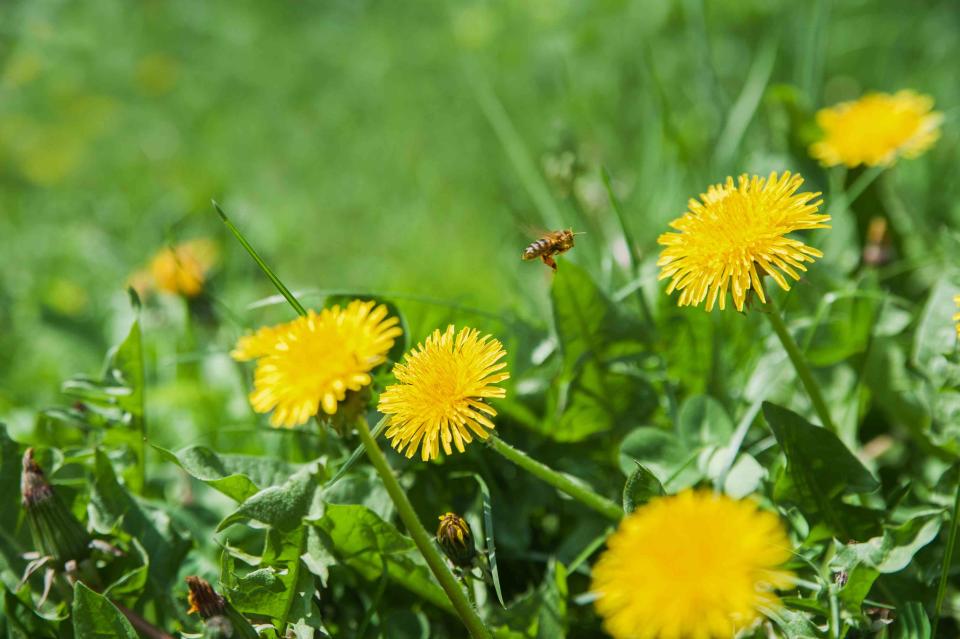
Senko Nelly/Getty Images
Controlling weeds in your landscape can be tricky, but knowing how to spot problem plants is a crucial first step in managing them. Being able to identify aggressive weeds before they spread can head off damage to the rest of your property. On the other hand, knowing which weeds don't spread as rapidly or have redeeming qualities—like supporting pollinators—will help you manage your workload in the garden. To help you get acquainted with the weeds growing in your lawn, we're sharing some of the most common varieties and tips on how to treat them.
Meet the Expert
Jennie Rebecca Cramer, an educator with Cornell University Garden-Based Learning and founder of Garden Rhythm, a regenerative gardening course
Aaron Steil with Iowa State University Extension
Related: 15 Invasive Weeds That Are So Pretty, You Might Mistake Them for Flowers
Asiatic Dayflower
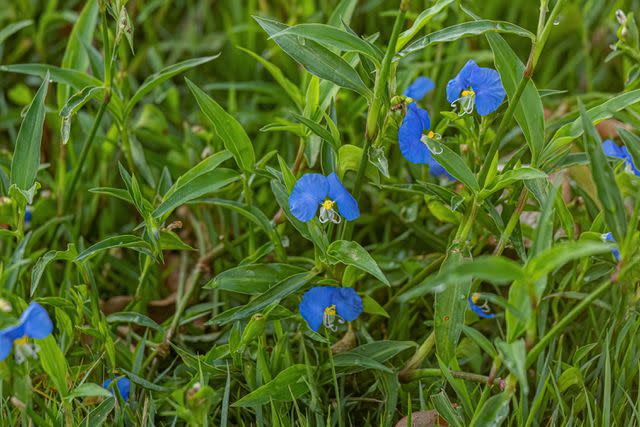
Getty Images
A member of the spiderwort family, the Asiatic dayflower (Commelina communis) is an annual with glossy leaves and two-petaled blue flowers that open for a single day. While some gardeners welcome it as a ground cover, it's considered invasive in several states because it spreads aggressively and excludes other species.
To keep it in check, hand-pull plants while they're small, being sure you've removed all stem fragments.
Bindweed
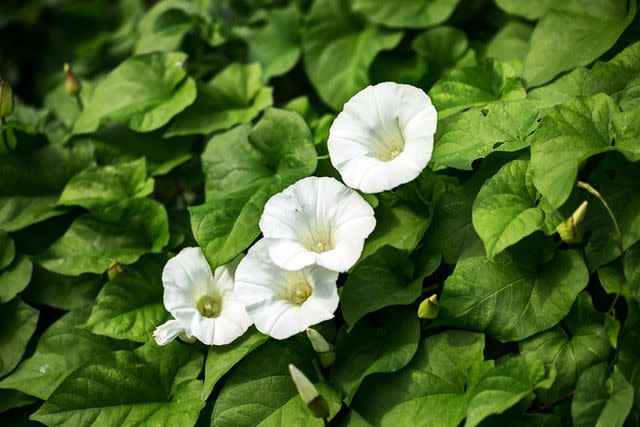
jamesvancouver/Getty Images
Bindweed (Convolvulus) is a perennial invasive plant that climbs 6 feet or more, wrapping its way around garden plants, shrubs, fences, and structures. It spreads by seed and via an extensive root system that reaches as far as 9 feet through the soil.
Pull or cut plants at the ground level, repeating often, as leftover roots will send up new shoots. If all else fails, consult your state or county extension service for advice on spot-treating with a post-emergent herbicide.
Black Medic
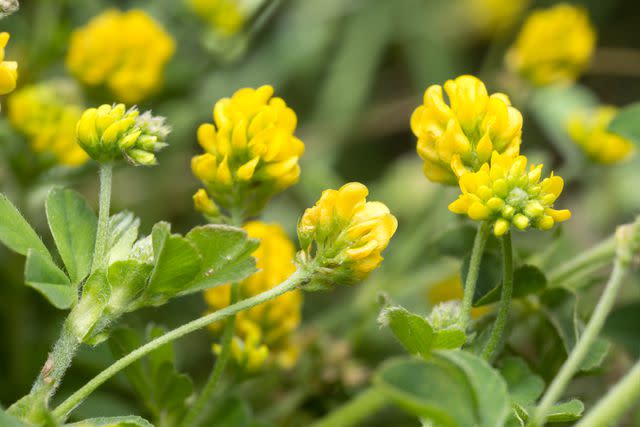
Hendrik/Getty Images
A summer annual, black medic (Medicago lupulina) grows in dry, sunny areas on thin turf, forming patches that spread up to 2 feet. It looks a bit like clover with dark green leaves and yellow flowers that bloom throughout the growing season.
Improve your turf's health to help it outcompete this broadleaf weed. You can also pull plants by hand and apply an appropriate herbicide, following package directions carefully to minimize harm to turf or other landscape plants.
Broadleaf Plantain
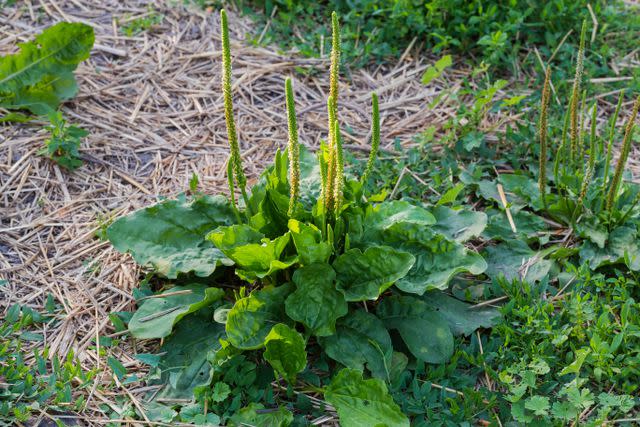
anmbph/Getty Images
Broadleaf plantain (Plantago major) grows throughout the U.S., popping up in sidewalk cracks and turf grass with its distinctive oval leaves. It spreads by seed and can tolerate compacted, trampled soils.
Keep your lawn dense and healthy to discourage spreading and hoe out unwanted plants, making sure that you've pulled up the entire root system.
Canada Thistle
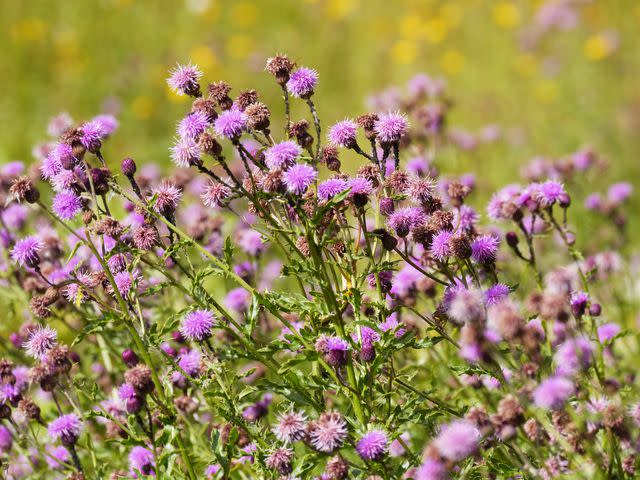
Moelyn Photos/Getty Images
A perennial, Canada thistle (Cirsium arvense) grows on sunny lawns and landscapes. Plants can reach 5 feet tall and spread through seeds and a horizontal root system, producing patches of plants with rose-purple flowers and prickly-edged leaves.
Cut or dig out plants throughout several growing seasons to starve underground stems, wearing gloves to protect your hands. For help with a large infestation, ask your local extension service to suggest herbicide treatments.
Related: 12 Plants That Will Keep Weeds Out of Your Garden
Chickweed
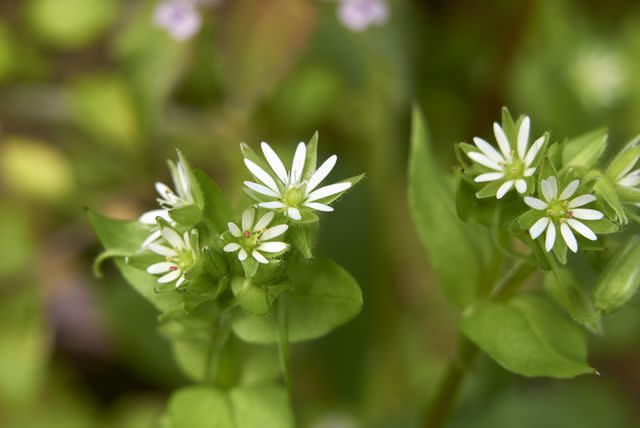
seven75/Getty Images
This cold-hardy annual can be found in spring and fall, branching out in wide patches. While you might not like how it looks in your lawn, chickweed (Stellaria media) is easy to pull by hand and is tasty on salads, says Jennie Rebecca Cramer, an educator with Cornell University Garden-Based Learning and founder of Garden Rhythm, a regenerative gardening course.
To keep this prolific seeder in check, nab plants before they go to seed, she says.
Common Lambsquarters
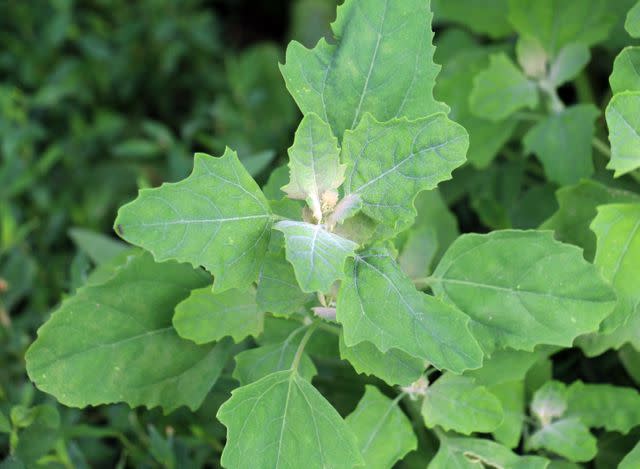
Orest Lyzhechka/Getty Images
Also known as pigweed, common lambsquarters (Chenopodium acerifolium) is a fast-growing annual that can grow as tall as 6 feet and produce as many as 176,000 seeds per plant. It often pops up in gardens and other areas where soil has been disturbed. Pale gray-green leaves grow on reddish or purple stems.
You might see this plant promoted for foraging, but be aware that it is poisonous to dogs and cats and can be mildly toxic to humans when eaten raw. To eliminate it from your garden bed or landscape, use or make a mulch to prevent seeds from germinating or hand-pull and hoe plants before they flower in spring.
Common Lespedeza
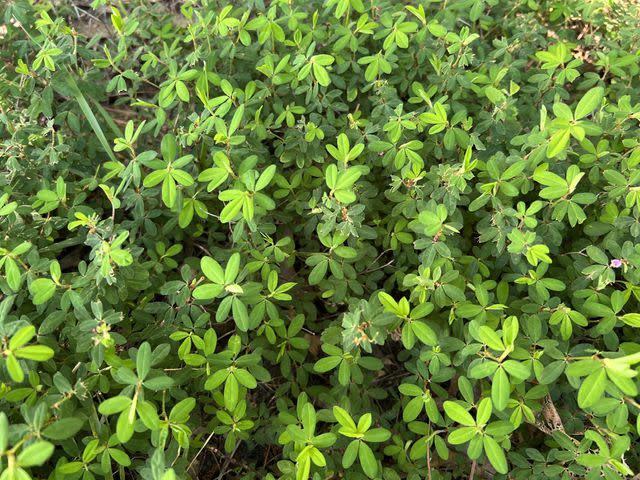
Sherry Barr/Getty Images
A troublemaker on lawns throughout the Southeastern U.S., common lespedeza (Portulaca oleracea) is an annual legume that grows into 18-inch patches that choke out thin turf. Plants have wiry stems with dark green leaflets that grow in groups of three. Flowers are pink to purple.
Irrigate turf grass deeply but infrequently during droughts to improve its root depth and ability to compete, and reduce foot traffic to give thinned turf time to recover. Aerating turf grass can also help, especially if you top-dress holes with organic matter or compost to increase nutrients. If needed, contact your state or county extension service about using an herbicide that won't injure turf grass and other landscape plants.
Crabgrass
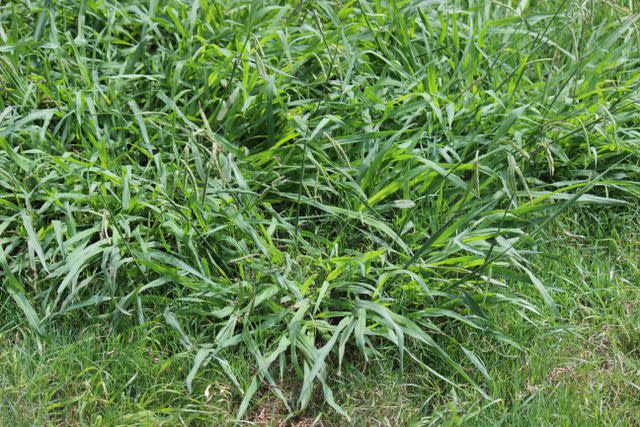
Yesim Sahin/Getty Images
Crabgrass (Digitaria) grows from seeds dropped the previous fall and sends down roots wherever its stems touch the soil. Large patches die off after the first frost, leaving bare spots in your lawn.
Dig and pull crabgrass before it goes to seed, working diligently to stay ahead of it, says Aaron Steil with Iowa State University Extension. A pre-emergent herbicide can also do the job. Work with your state or county extension service to time applications for maximum effectiveness.
Related: How to Kill Crabgrass in Your Lawn Once and for All
Creeping Charlie
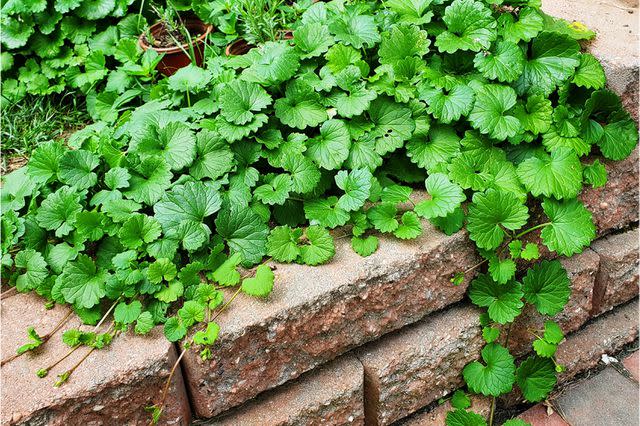
Sharon Love/Getty Images
This low-growing broadleaf perennial reproduces by seed and by sending out roots from its creeping stems, expanding in runners that can grow as long as 10 feet. "It does flower first thing in the spring, but it isn't the greatest pollinator supporter because it blooms for such a short period of time," says Steil.
A member of the mint family, creeping Charlie's (Glechoma hederacea) aggressive growth can become problematic. Pull as much as you can by hand and consider an organic treatment on garden beds or a post-emergence herbicide on lawns, applying it in late fall, when the plant is going into dormancy and pulling carbohydrates into the root system.
Creeping Wood Sorrel
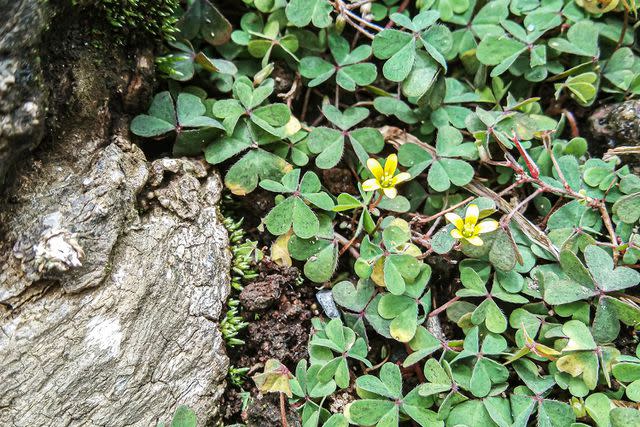
Nurma Susila/Getty Images
Perennial creeping wood sorrel (Oxalis corniculata) spreads across garden beds and turf in two ways: via seed pods that rupture and by forming roots and stems where nodes connect with soil. You'll know it by its heart-shaped leaflets and five-petaled yellow flowers.
In garden beds, use mulch to block light and prevent germination, then hand-weed any remaining plants before they flower and set seed. You can also employ soil solarization, using a plastic tarp and the sun's heat to germinate and destroy the seed population. On turf grass, a pre- or post-emergent herbicide could be your best option. Contact your state or county extension service to choose the right product and time for your application.
Dandelion
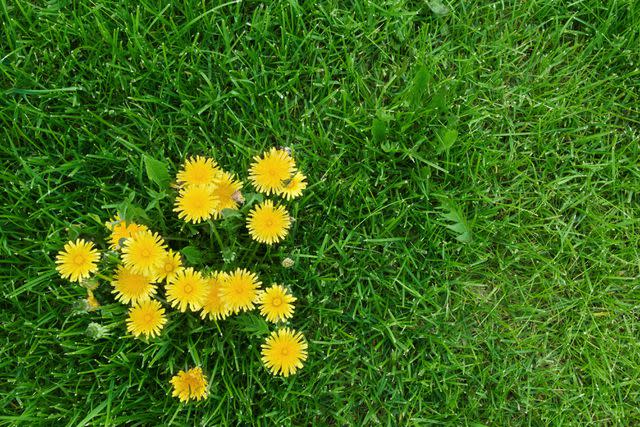
Eerik/Getty Images
Although it's considered a weed, dandelions (Taraxacum) are beloved by many gardeners. "The dandelion is one of my all-time favorite plants," Cramer says. "It provides early food for bees, it's one of the first things to flower in a lawn, and it provides a deep root structure that's really good for the overall health of the ecosystem."
Many people have come to believe a lawn should be uniformly green, which may be the reason some prefer a dandelion-free lawn, Steil says. "Anybody who's ever had grass grow in their perennial bed knows it's a pretty aggressive plant," he says. "If it's happy, it competes pretty well."
If you're not a fan, use a trowel or a fishtail weeder to remove dandelion plants before they go to seed.
Related: How to Get Rid of Dandelions for Good—Plus, Expert-Approved Ways to Use the Plants
Dutch White Clover
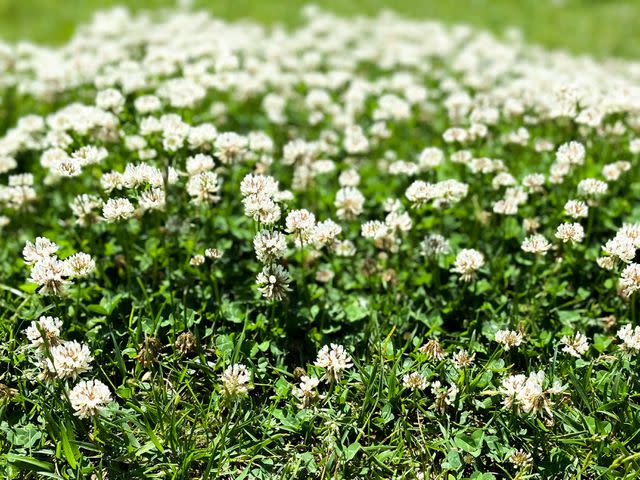
Catherine McQueen/Getty Images
Some people purposely mix clover (Trifolium repens) with their grass and if your lawn is healthy, white clover actually plays with turf grass well, says Steil.
Not convinced? Try pulling or spading it by hand, then apply a broadleaf herbicide in the fall to any plants that persist, using it according to instructions and on a day that's not too windy or warm to avoid damaging other plants in your landscape.
Related: Clover Lawns Are the Landscaping Trend That Calls for Just 4 Mowings Per Year
Garlic Mustard
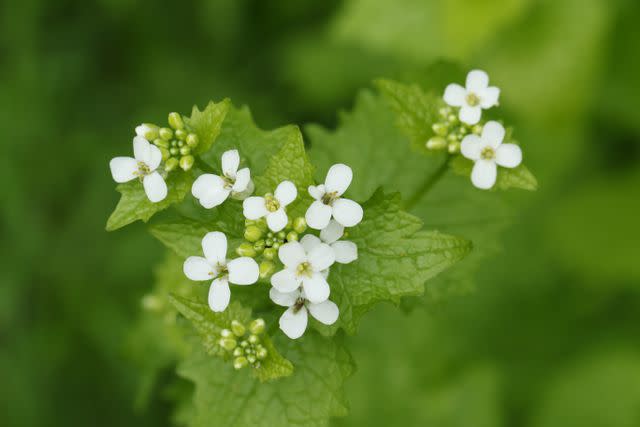
Sandra Standbridge/Getty Images
This competitive plant is most likely to be a problem in your shade garden, where it can easily choke out native plants. A biannual, it has a two-year life cycle.
You can spot-treat garlic mustard (Alliaria petiolata) with an herbicide, but a better solution is to pull plants as soon as you see them, before they set seeds. Garlic mustard is easy to see when it's blooming in spring and easy to pull. "Persistence is key," Steil says. "It's not a one-and-done thing."
Giant Hogweed
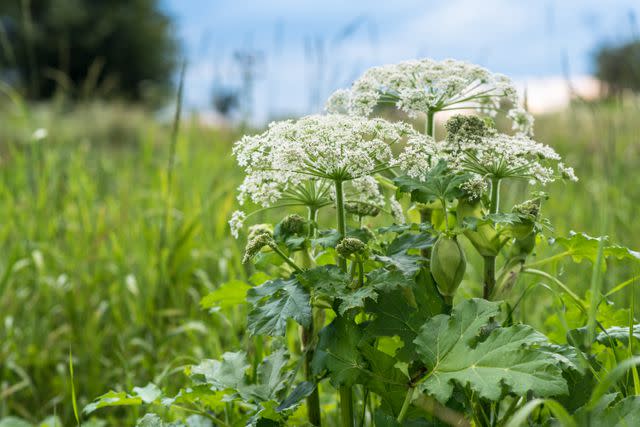
Getty Images
Giant Hogweed (Heracleum mantegazzianum) is a perennial that thrives in New England, the Mid-Atlantic region, and the Northwestern U.S. Plants can grow up to 15 feet tall, producing massive white flowers and spreading to form dense canopies that outcompete native plants.
Giant hogweed is also a threat to human health, causing painful, persistent blisters if moist skin comes into contact with sap and is then exposed to sunlight. The plant's sap can also cause blindness. If you see giant hogweed on your lawn or property, contact your state or county extension office for assistance.
Hairy Bittercress
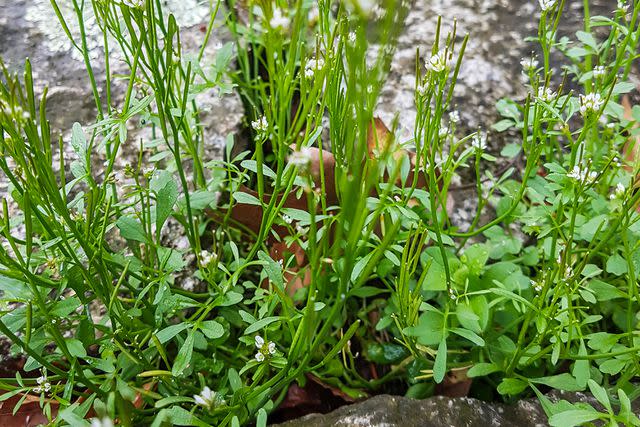
arousa/Getty Images
A member of the mustard family, hairy bittercress (Cardamine hirsuta) is an annual that germinates in the fall and emerges in flower beds and turf grass in early spring. While foragers value its tender leaves as microgreens, its seed capsules pop explosively, creating unwanted plants throughout a landscape.
Hand-pull young plants early in the season, then reseed grass or work to improve the health of your turf grass. In garden beds, apply mulch to discourage growth.
Henbit
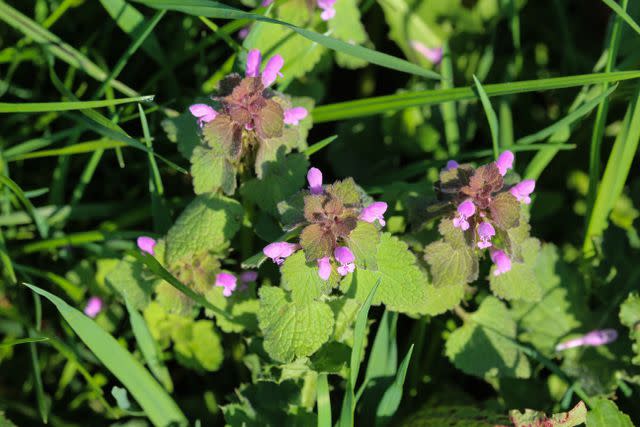
Michael Meijer/Getty Images
A winter annual, henbit (Lamium amplexicaule) typically germinates in fall and forms flowers and seeds in spring. It produces tubular flowers and purple-tinted leaves that green up over time.
While it's considered a weed, henbit is also an early spring food source for honey bees, bumble bees, and other pollinators. Consider allowing some to grow, pulling unwanted plants by hand before they flower to keep their spread in check. Discourage it on your lawn by improving turf grass health and switching to a grass that thrives in less sun.
Honeyvine Milkweed
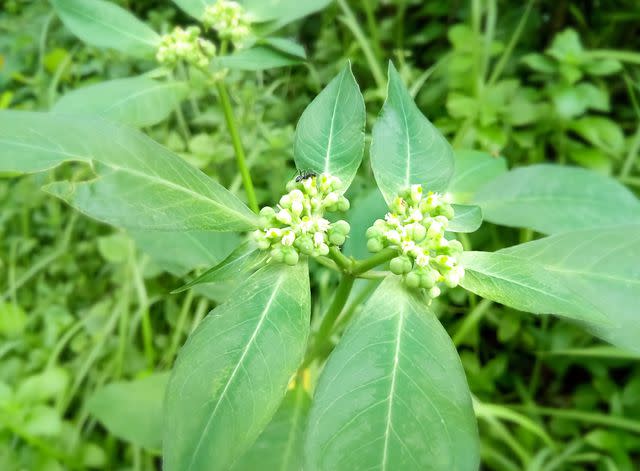
Md Saiful Islam Khan/Getty Images
This twining perennial vine can grow 10 feet long, covering fruit trees and garden plants. Honeyvine milkweed (Cynanchum laeve) spreads via seed pods and underground rhizomes. And while it can host monarch larvae, it's one of the butterflies' least preferred milkweeds.
Because it rambles over desirable plants and trees, spraying isn't a good option, says Steil. Your best bet: Watch for it in the spring and pull plants as soon as you see them, especially before the seed pods ripen and open in the fall.
Japanese Knotweed
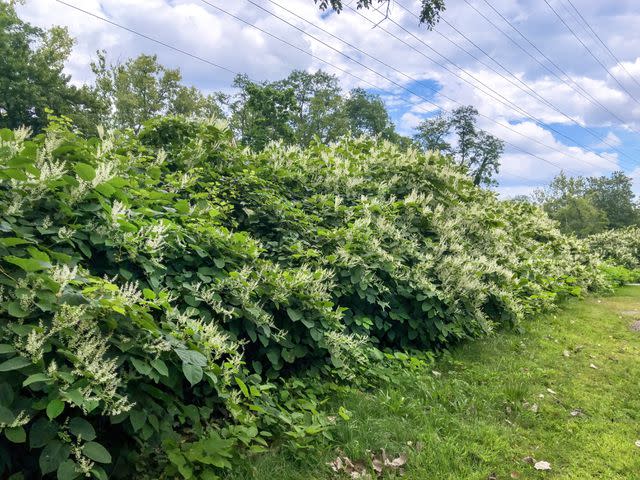
Ali Majdfar/Getty Images
An invasive perennial, Japanese knotweed (Fallopia japonica) spreads through extensive horizontal roots, or rhizomes. If you cut the stems of these giants, both the remaining section and the portion you trimmed can grow into new plants. And while it's worth noting that Japanese knotweed has benefits as an organic fertilizer, food, and antioxidant, it can also create a monoculture that crowds out other vegetation.
If you have a relatively small patch and some patience, cut it back and cover the area with a weighted tarp. Or cut plants and apply an herbicide at least eight weeks later, preferably late in the growing season, which will move into roots and rhizomes. Repeat the following season and monitor thereafter to prevent regrowth.
Related: How to Order Flower Seeds Like a Professional Gardener
Japanese Honeysuckle
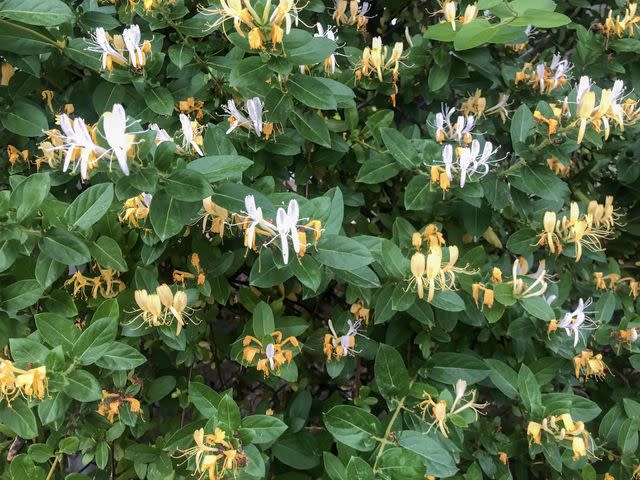
Ali Majdfar/Getty Images
This invasive, non-native vine produces tubular blooms in white, pink, or creamy yellow. It reproduces via runners and its fruit, which is often disbursed by birds. An aggressive grower, Japanese honeysuckle (Lonicera japonica) can girdle desirable plants and displace native vegetation.
Getting rid of it will take some persistence. Cutting the vines can be effective, especially if you do so frequently and before late summer to reduce reseeding. Repeat often over a two-year period, removing cut vines so they don't re-root. Consider applying an herbicide to cut stems of stubborn survivors.
Purple Deadnettle
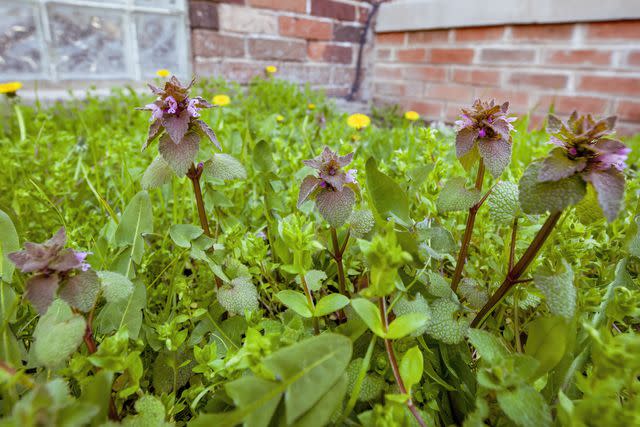
Ali Majdfar/Getty Images
Another member of the mint family, purple deadnettle (Lamium purpureum) germinates in fall and typically emerges in spring, spreading quickly in lawns and garden beds.
While its pinkish-purple flowers provide an early food source for pollinators, the plants can die back and leave bare patches on turf grass. Control excess growth by pulling plants, building the health of your turf, and reseeding in the fall.
Poison Ivy
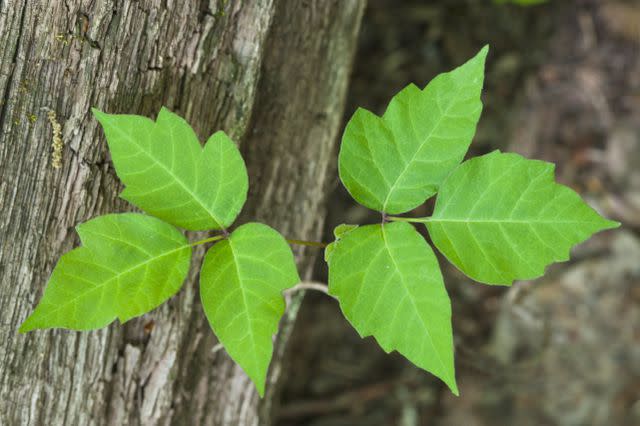
Ed Reschke/Getty Images
Every part of poison ivy (Toxicodendron radicans) contains urushiol, an oil that causes an allergic reaction and rash in most people. It can be transferred to clothes, pets, and garden tools in any season.
Eastern poison ivy is typically a hairy vine with three leaves—green in summer, red in fall—budding from one stem. Western poison ivy is a low shrub with a three-leaf combination. Plants can also have flowers and berries.
Seek out and pull poison ivy plants while they are young, wearing gloves that you wash thereafter or using a plastic bag that you throw away, says Steil. Cut large plants at their base, then apply an herbicide directly on the cut end. Leave any remaining vines untouched since urushiol remains active in dead plant material for several years.
Poison Oak
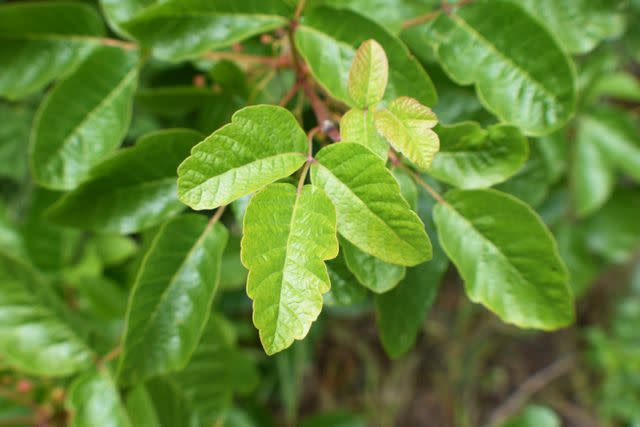
Darren415/Getty Images
Most common in the western U.S., perennial poison oak (Toxicodendron pubescens) grows in open areas as dense, leafy shrubs or climbing vines. Plants spread via seed and rhizomes, or underground stems, and while they most often have three leaflets per group, some can have as many as nine.
Like poison ivy, poison oak contains urushiol, an oil that causes an allergic reaction and rash in most people. Remove young plants by hand, pulling them, wearing gloves that you immediately wash, or using a plastic bag that you discard. Cut larger plants at the base, applying an herbicide on the cut end and reapplying in a few weeks if it is re-sprouting.
Pokeweed
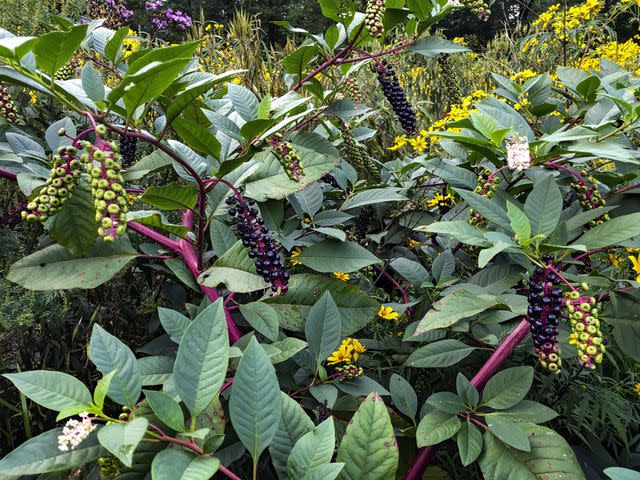
Ali Majdfar/Getty Images
Perennial pokeweed (Phytolacca decandra) produces copious seeds and extensive root systems, creating dense stands that outcompete native and desirable plants for light, water, and nutrients. Plants can grow to a height of 10 feet.
While their fruits and flowers attract pollinators and songbirds, and some people eat parts of very young plants after blanching them, the entire plant is poisonous and should be considered with extreme caution. Hand-pull young plants and use a shovel to dig out larger ones, bagging and discarding seeds so they don't re-sprout. You can also use an herbicide on a cut stump.
Purslane
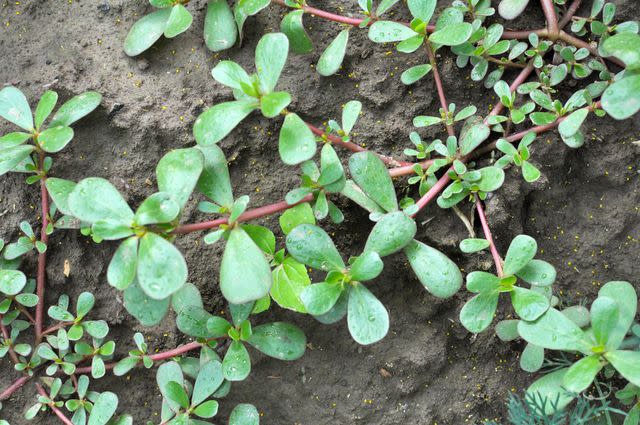
Orest Lyzhechka/Getty Images
An annual, purslane grows up to 2 feet wide and spreads rapidly in garden areas and dry, sunny landscapes. While it can crowd out other plants in the garden and leave blank spots in the lawn, it's also a nutritious and tasty edible plant that is high in omega-3 fatty acids, Cramer notes.
Keep it in check by pulling unwanted plants before they go to seed.
Related: This 3-Ingredient Homemade Weed Killer Uses Vinegar to Safely Remove Pesky Growths from Your Garden
Ragweed
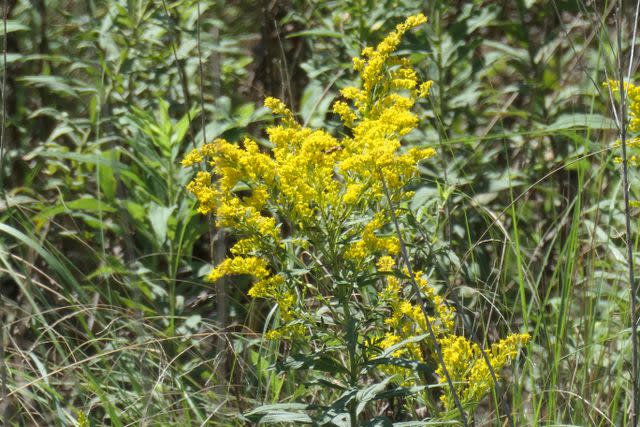
Little Hand Images/Getty Images
Don't blame goldenrod for your spring sniffles, Cramer says. The culprit is likely ragweed (Ambrosia), which flowers at the same time. These fernlike annuals thrive in sun or partial shade, growing up to 4 feet tall.
Maintain a healthy lawn and mulch garden beds to discourage ragweed growth and pull or hoe plants in spring before they spread.
Shepherd's Purse
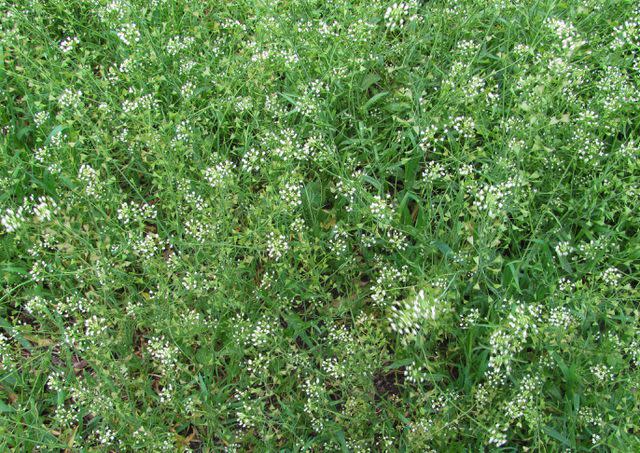
Green Flame/Getty Images
A winter annual, shepherd's purse (Capsella bursa-pastoris) grows throughout the U.S. Rosettes of lobed leaves form at the plant's base, and small white flowers cluster atop 20-inch stems. Considered invasive in several states, this weed typically germinates in late summer or early fall and spreads in spring via seeds released from flat, triangular pods with purse-like seams.
Plants are easy to pull by hand, especially in moist soil, or controlled organically with a 10 to 20 percent acetic acid concentration of vinegar.
Spotted Spurge
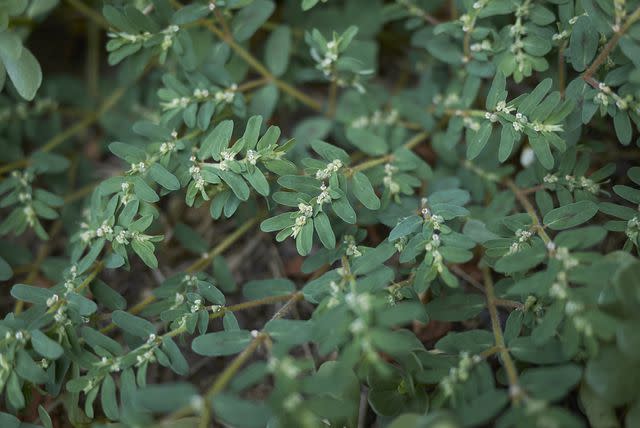
Seven75/Getty Images
A low-growing annual, spotted spurge pops up in gardens, sidewalk cracks, and sparse lawns. Lacy patches can grow to 3 feet in diameter, producing thousands of seeds.
Apply a thick mulch to prevent germination and wear gloves to pull existing plants, as their sticky sap can irritate skin. Use a spade to remove the root. Soil solarization can also be effective, or contact your local extension service to find the right herbicide and discuss application timing for your location.
Stinging Nettle
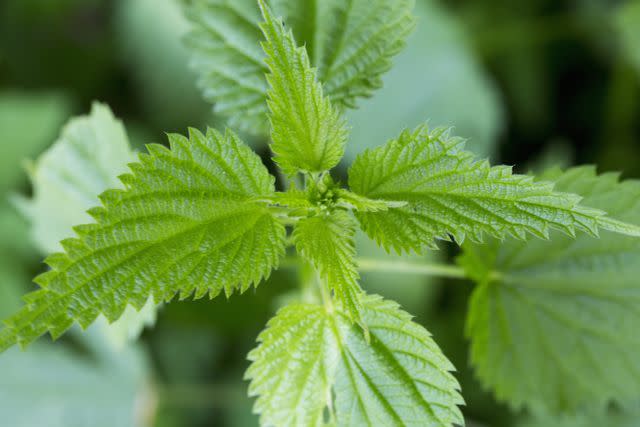
Judith Haeusler/Getty Images
Stinging nettle (Urtica dioica), a perennial herb, spreads by seed and via underground rhizomes. Plants grow to 10 feet tall and cause itching and burning to exposed skin that can persist for as long as 12 hours.
While roots, stems, and young leaves are edible, stringing nettle can also form dense colonies and is considered a noxious weed in some areas. Remove plants by hand and dig out roots wearing gloves and long sleeves.
Yellow Nutsedge
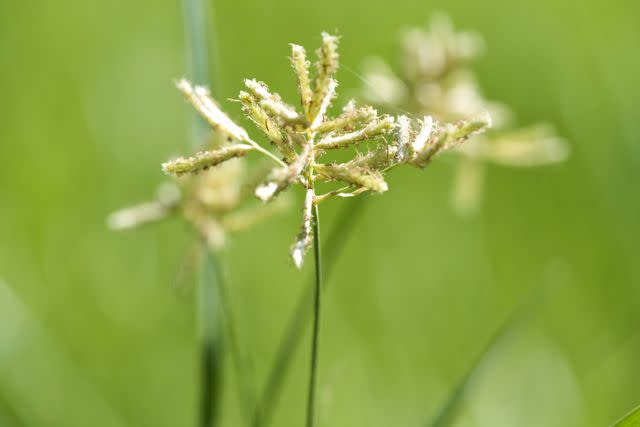
aire images/Getty images
Found throughout North America, perennial yellow nutsedge (Cyperus esculentus) grows quickly in compacted and wet areas, spreading via underground stems and tubers. Its triangular shape, yellow color, and coarse texture make it easy to distinguish from turf grass.
Hand-pull plants as soon as they emerge in spring, removing underground as well as above-ground portions, and maintain turf grass health with regular mowing and fertilization. For a significant problem, consider a sedge-selective herbicide or have the top 1 to 2 inches of soil excavated, replaced, and reseeded. "That hopefully helps with some of the compaction and also helps get rid of all those things that can re-sprout," Steil says.
Read the original article on Martha Stewart.

